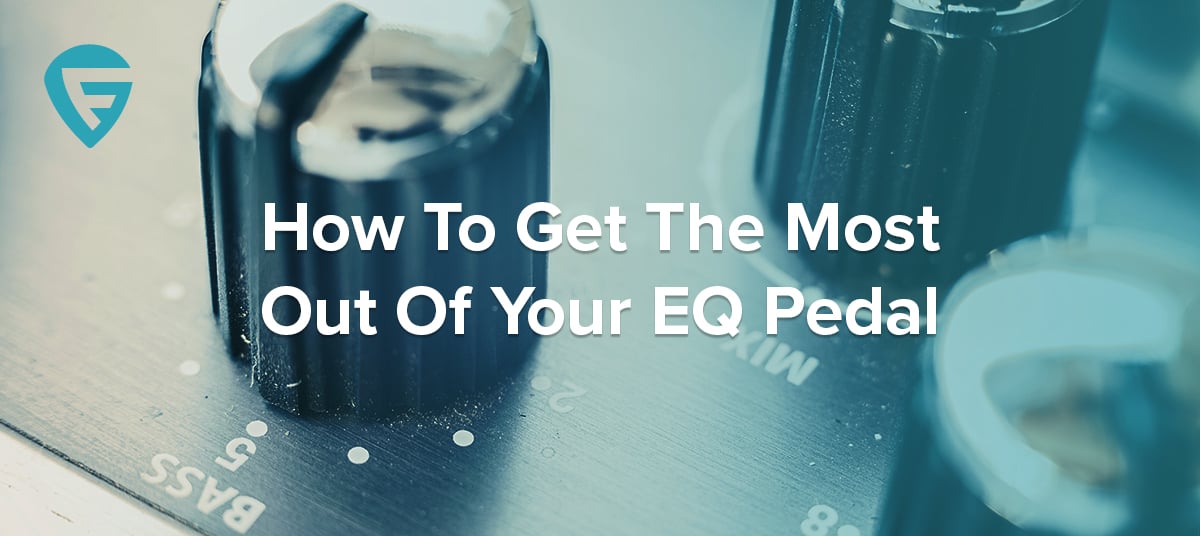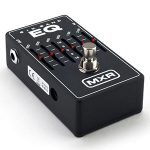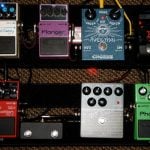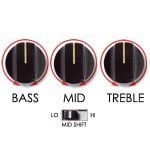- Home
- Instruments
- Gear
- Recording
- Lessons
- Reviews
- Blog

EQ pedals are a very powerful tool that can take your tone to a whole different level of quality. That is, if you know how to use the. Even the best EQ pedals available at the moment won't help you much if you are not able to efficiently control them and have the knowledge on how to use them in your particular setup. Lack of this awareness and knowledge is actually a large part of the problem most new players have with EQs. They are reluctant to try them, and even when they do a good majority uses them wrong.
This usually leads to them writing off EQ pedals as gimmicks which are more or less just for show. Naturally, this couldn't be farther from the truth. For that reason, we are going to give you the basics of using an EQ pedal today, and show you what some good practices are. If you just got your first EQ pedal, you might want to refer to our article that explains what the EQ pedal is ‘What Are EQ Pedals For', and then come back. On that note, let's dig in since there's so much ground to cover.
 The answer to this question is simple. An EQ pedal gives you the type of control over your sound that you simply can't get from the amp nor the guitar you are using. Maybe you want to cut down on some excess frequencies or add some where they are lacking the most. An EQ pedal allows you to do these things, and so much more. With that said, there are several things you need to keep in mind when using EQ pedals.
The answer to this question is simple. An EQ pedal gives you the type of control over your sound that you simply can't get from the amp nor the guitar you are using. Maybe you want to cut down on some excess frequencies or add some where they are lacking the most. An EQ pedal allows you to do these things, and so much more. With that said, there are several things you need to keep in mind when using EQ pedals.
![]() Choosing an EQ pedal that best suits your needs is essential. You have to ask yourself what is the main reason you're getting that pedal. Maybe you want to boost your signal with the ability to appoint that boost to certain parts of the frequency range.
Choosing an EQ pedal that best suits your needs is essential. You have to ask yourself what is the main reason you're getting that pedal. Maybe you want to boost your signal with the ability to appoint that boost to certain parts of the frequency range.
Maybe you just want something that will ‘normalize' your guitar's natural tone profile. You should always choose the model which meets your requirements, and is within the limits of your skill or knowledge. Going for the most complex EQ out there sounds like a good plan, but may actually be counterproductive if you don't know how to use those extra features and controls.
 The positioning of an effect pedal is crucial to the performance of said pedal, and the whole signal chain. When it comes to positioning the EQ pedal, you have several options which are proven to work. Placing the EQ before the distortion, or even at the very beginning of the chain is beneficial in a sense that you are feeding an already altered signal to the rest of the pedalboard. You will see a lot of guitar player going for this particular option.
The positioning of an effect pedal is crucial to the performance of said pedal, and the whole signal chain. When it comes to positioning the EQ pedal, you have several options which are proven to work. Placing the EQ before the distortion, or even at the very beginning of the chain is beneficial in a sense that you are feeding an already altered signal to the rest of the pedalboard. You will see a lot of guitar player going for this particular option.
On the other hand, there are those who like to place their EQ at the very end of the chain. This works as well, but you need to be careful with temporal pedals such as delays or reverbs. Having these two before your EQ can mess up the whole tone in a short period of time.
 Before we get into any details, you need to take a step back and look at your guitar. What kind of tone does it have? Does it come with single coils or humbuckers? Active or passive? All of these things will have an impact on how you're going to add the EQ to the chain.
Before we get into any details, you need to take a step back and look at your guitar. What kind of tone does it have? Does it come with single coils or humbuckers? Active or passive? All of these things will have an impact on how you're going to add the EQ to the chain.
For example, a single coil type guitar, like a Strat or something, is going to be thin in the low end. boosting this part of the frequency range would then be beneficial. A similar thing goes for humbucker guitars, only this time you are working on those mids and trebles.
 Bass, mids, and treble are your standard frequency bands which EQ pedals allow you to refine. Some pedals will be more complex, while others are going to be simple. Either way, you will see these three bands on every single pedal out there. On that note, there's one golden rule of equalizing your tone – start from the ground up. In other words, roll all of the knobs to their zero position. Starting from this point allows you to hear exactly what different adjustments do to your tone.
Bass, mids, and treble are your standard frequency bands which EQ pedals allow you to refine. Some pedals will be more complex, while others are going to be simple. Either way, you will see these three bands on every single pedal out there. On that note, there's one golden rule of equalizing your tone – start from the ground up. In other words, roll all of the knobs to their zero position. Starting from this point allows you to hear exactly what different adjustments do to your tone.
In terms of individual frequency bands, bass is among the most important and the one which often gets used incorrectly. You want to give your band and your music some girth, but if you take things too far, you are risking completely ruining your tone. Trebles are what controls how clean and crisp your tone is. Unless you are trying to cut through a heavy mix, you probably don't need to mess with trebles all that much.
Mids are where most of the action takes place. This frequency band is what gives your tone the richness and depth. Going overboard will end in very sharp but thin tone, while the other end of the equations means you get a fat but muddy tone. Since mids are filling up the gap between bass and treble, you should first dial in these two and then use the mids control to achieve the best bridge between these two different frequencies.
Using EQ pedals in not hard once you really understand what each frequency band does, and how that reflects on your tone. Since a lot of pedals have their own capabilities, you can count on seeing different bandwidths being used.
No matter what the case ends up being, that basic bass-mid-treble understanding will get you ahead. When you come to a complete understanding of EQ pedals, your tone will become much closer aligned with your own style of playing guitar. That is guaranteed.

Reader Interactions